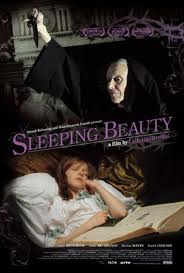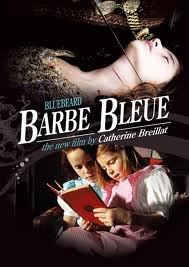Before the Singing Mice
March 19, 2012 § 2 Comments
Cinderella in the Silent Film Era
I finally watched Hugo last night. It was as fabulous as I had hoped, even in the slightly forced but inevitable orphan-child-finds-a-family scenes. And of course, I could see what the reviewers out there had been talking about–that Scorsese had essentially crafted a love letter to the early days of film, when imagination could be sparked by a clever film cut, or an elaborate tableau.  Being familiar with the book, I had been aware that the biography of George Melies, the pioneer of early film, featured largely in the film, and I was pleased to find that most of the film’s claims about Melies are actually true. He did, in fact, give up making films, and did, after all, work in near poverty in a toy shop in the Montparnasse station before being “re-discovered” by several researchers and journalists interested in his work. While no biographies I can find make any mention of a scrappy orphan boy being the key to Melies’s reemergence into public life, and Melies actually lived with his granddaughter (Madeline), and not a goddaughter (the fictitious Isabelle), the essence of Melies’s withdrawal from and eventual return to the world of filmaking in the early 20th Century remains as magical as a fairy tale, and as real as one could hope.
Being familiar with the book, I had been aware that the biography of George Melies, the pioneer of early film, featured largely in the film, and I was pleased to find that most of the film’s claims about Melies are actually true. He did, in fact, give up making films, and did, after all, work in near poverty in a toy shop in the Montparnasse station before being “re-discovered” by several researchers and journalists interested in his work. While no biographies I can find make any mention of a scrappy orphan boy being the key to Melies’s reemergence into public life, and Melies actually lived with his granddaughter (Madeline), and not a goddaughter (the fictitious Isabelle), the essence of Melies’s withdrawal from and eventual return to the world of filmaking in the early 20th Century remains as magical as a fairy tale, and as real as one could hope.
Also, it got me thinking.
What with the spate of fairy tale offerings due out from the major film houses this year, I’ve been hearing–or rather, reading, thanks to WordPress’s genius “terms people have used to find your site” tool–one question repeated often:
Why the new obsession with fairy tale films?
Now, why anyone would type that in as a search an expect a “well, Davey, here’s what you need to know” answer to pop up immediately is beyond me, but with that said…
Well, Davey (or whatever your name is), here’s what you need to know: « Read the rest of this entry »
Stepping Into the Story: Catherine Breillat’s Bluebeard and The Sleeping Beauty
February 3, 2012 § Leave a comment
Part Two: The Sleeping Beauty
 If French director Catherine Breillat’s Bluebeard explores the timeless tendency of young girls to identify with storybook characters to aid their burgeoning self-awareness, then The Sleeping Beauty, her next film in a trio of fairy tales (Beauty and the Beast will be Breillat’s third), shows how this same story-escapism can create a real identity-crisis shitstorm when it comes to the realm of romance, sex, and bruised expectations.
If French director Catherine Breillat’s Bluebeard explores the timeless tendency of young girls to identify with storybook characters to aid their burgeoning self-awareness, then The Sleeping Beauty, her next film in a trio of fairy tales (Beauty and the Beast will be Breillat’s third), shows how this same story-escapism can create a real identity-crisis shitstorm when it comes to the realm of romance, sex, and bruised expectations.
The Sleeping Beauty turns the visual spectacle dial up a notch from its Bluebeard setting—here we have sprightly sprites, a clan of clattering gypsies, and a be-gloved Jezebel of a Snow Queen, always shown in wavering blue light.
To the same degree, Breillat’s narrative structure gets even stranger. Narratively speaking, The Sleeping Beauty could be argued as less satisfying than Bluebeard, maybe because Breillat attempts some pretty awkward transitions by breaking the film into thirds. First comes the princess Anastasia’s birth and her “normal” childhood, in which she plays by herself, hates her dresses but loves her dictionary, and wants her parents to call her Vladimir. Then she pricks her finger at age 6 with a wooden hair implement, and we have her long dreaming state, in which she befriends another child named Peter and goes on a quest to rescue him from the evil Snow Queen, meeting an odd prince and princess and an eccentric gypsy girl along the way. Finally, in perhaps the most jarring move, Anastasia is suddenly awake, in the midst of puberty and contemporary France, and she has an affair with the moody teenage boy—Peter’s grandson, we’re meant to believe—who finds her alone in her family’s abandoned estate.
In Bluebeard, Breillat’s divergences from the original Perrault story were done on the sidelines: an added framing device and some illuminations of character, but no ballsy renderings of plot. In The Sleeping Beauty, however, she takes great liberty with the familiar fairy tale, starting with the character’s age. The Sleeping Beauty of the title is not the princess we might remember from the stories—for one, she is only six, and not sixteen, when she falls into her hundred years’ sleep. She dreams through puberty, and wakes up one hundred years later, aged ten years. When asked why this is, the fairy who cast the spell shrugs and says, “childhood lasts too long.”
Touche, fairy. « Read the rest of this entry »
Stepping Into the Story: Catherine Breillat’s Bluebeard and The Sleeping Beauty
January 20, 2012 § Leave a comment
Part One: Bluebeard
 Bizarre, enchanting, sparsely told yet thematically intense. Bluebeard and The Sleeping Beauty, parts one and two of a triptych of fairy tale films (Beauty and the Beast will be third) by director Catherine Breillat are, for my money, touchstones, criterions, truly exceptional examples of what a fairy tale adaptation can be.
Bizarre, enchanting, sparsely told yet thematically intense. Bluebeard and The Sleeping Beauty, parts one and two of a triptych of fairy tale films (Beauty and the Beast will be third) by director Catherine Breillat are, for my money, touchstones, criterions, truly exceptional examples of what a fairy tale adaptation can be.
In other words, they’re pretty boss.
As entertainment for a casual viewer, let me tell you, these two are flawed. Breillat doesn’t allow her films to be entirely self-explanatory, and believe me, I’ve had quite a time trying to parse out a concise thesis from the myriad impressions swimming through my brain. Even for the more discerning film viewer, there are flaws: Breillat espouses  some narrative devices that are just, to put it kindly, awkward as all-get-out, and thematic explorations that take at least two more viewings to get even a handle on. In this review, I’m not going to try and argue that these films are perfect—but that for a fairy tale lover (and you know what I mean—we’re not talking Disney here, ever), these are required viewing.
some narrative devices that are just, to put it kindly, awkward as all-get-out, and thematic explorations that take at least two more viewings to get even a handle on. In this review, I’m not going to try and argue that these films are perfect—but that for a fairy tale lover (and you know what I mean—we’re not talking Disney here, ever), these are required viewing.
Though I can see these two films working thematically in tandem, I’m going to start by talking about each separately, beginning with Bluebeard.
Bluebeard is deceptive.